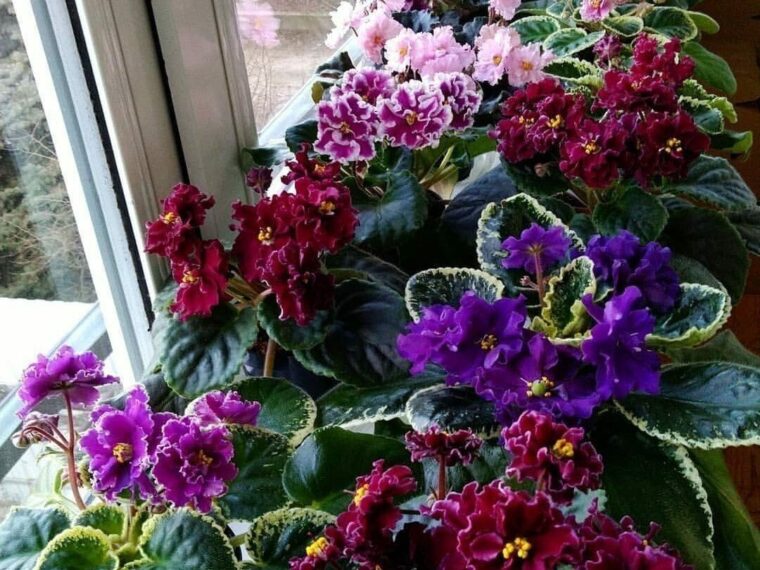- Set your violet on a humidity tray (a shallow tray with pebbles and water).
- Group several houseplants together to create a microclimate.
- Use a small room humidifier, especially in winter months.
Avoid misting the leaves directly—African violets are sensitive to moisture on their foliage.
5. Use a Well-Draining Potting Mix
These plants thrive in light, fluffy soil that allows roots to breathe.
Soil Suggestions:
- Use a specialized African violet potting mix, or make your own using peat moss, vermiculite, and perlite in equal parts.
- Avoid standard garden soil, which is too dense and holds too much water.
- Make sure the pot has good drainage holes to prevent root rot.
A soggy or compacted root system can prevent blooming and quickly lead to disease.
6. Feed Regularly with the Right Fertilizer
African violets are light but consistent feeders. Without enough nutrients, they simply won’t bloom as often.
Fertilizer Guidelines:
- Use a balanced, water-soluble fertilizer (like 14-12-14 or 20-20-20), specifically designed for African violets.
- Dilute to half strength and apply every 4 to 6 weeks during the growing season.
- Reduce feeding in winter when growth slows down.
Overfeeding can cause leaf burn or salt buildup, while underfeeding leads to fewer flowers.
7. Prune and Deadhead for Continuous Blooms
Removing spent flowers and yellowing leaves helps redirect energy into new flower production.
How To:
- Use clean, sharp scissors or pinch off faded blooms right at the base.
- Trim any damaged, yellowed, or dead leaves to promote airflow and light penetration.
This simple habit encourages fresh, healthy growth and a tidier appearance.
8. Keep Leaves Dry to Prevent Disease
African violets have fuzzy leaves that hold moisture, making them prone to fungal infections and rot when wet.
Tips:
- Always water at the base or use bottom watering.
- If water lands on the leaves, gently blot them dry with a paper towel or soft cloth.
- Avoid using cold water which can spot the leaves.
Clean leaves = happy plant.
9. Give Each Plant Its Space
Crowded plants can struggle with airflow, leading to excess humidity, pests, or fungal issues.
Spacing Guidelines:
- Leave space between plants so that air can circulate around them.
- Avoid placing them too close to walls or other objects that might trap heat or moisture.
- Repot when necessary to give roots room to grow.
Overcrowding can also block light and result in stunted blooms.
10. Watch for Pests and Treat Early
African violets are generally hardy, but pests like mealybugs, aphids, and spider mites can appear, especially in warm indoor environments.
What To Do:
- Inspect leaves (especially the undersides) and soil weekly.
- If pests appear, wipe leaves with a damp cloth and treat with neem oil or insecticidal soap.
- Isolate the infected plant to prevent spreading.
Early detection is key—don’t let a small pest problem turn into a plant emergency.
Bonus Tip: Repot Annually
While African violets don’t like overly large pots, repotting once a year into fresh soil helps prevent rootbound conditions and encourages new growth.
Use a slightly larger pot only if the roots are very crowded. A pot that’s too big may slow blooming.
Final Thoughts
With the right care, African violets can reward you with gorgeous, colorful blooms all year long. These little flowering powerhouses may look delicate, but they’re surprisingly hardy when their basic needs are met.
To recap, keep your African violets thriving by providing:
- Bright, indirect light
- Proper watering
- Consistent temperatures
- Humidity
- Well-draining soil
- Regular feeding
- Deadheading and pruning
- Clean, dry leaves
- Sufficient space
- Pest control
Master these 10 essential tips, and you’ll enjoy a flourishing, flower-filled display in your home—month after month.
Happy growing!





